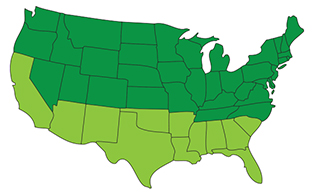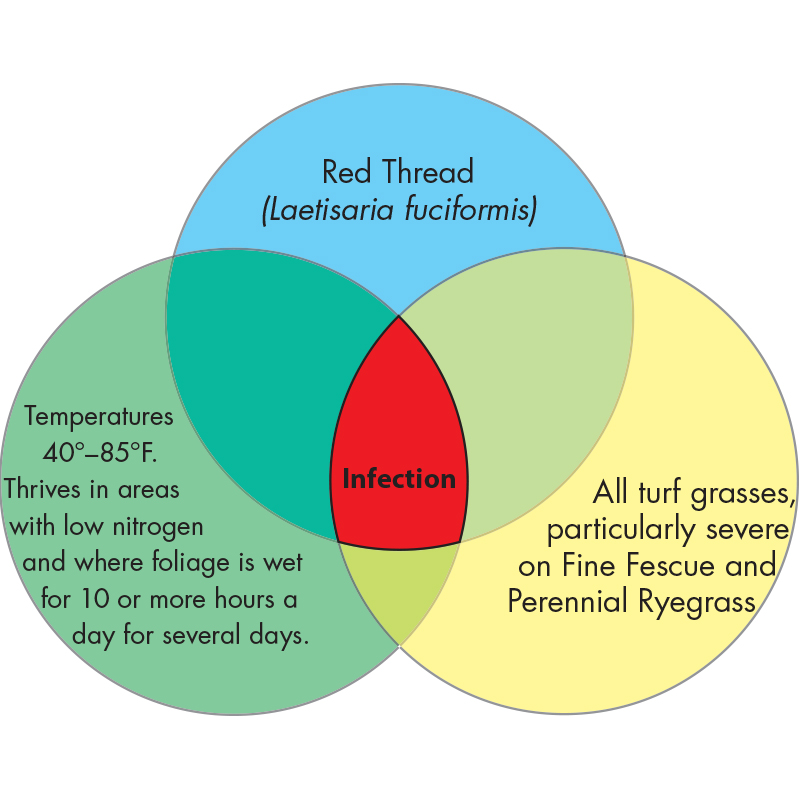
Red Thread
Laetisaria fuciformis
Red Thread affects all types of grass in the northern United States and is caused by the lawn fungus Laetisaria fuciformis. This lawn disease inflicts its most damage during mid- to late spring and late summer to early fall.
Identify

Foliar
This lawn disease can crop up whenever there are extended periods of cool, wet weather. The most common signs of Red Thread are the reddish-brown patches that form in your lawn, measuring 1 to 4 inches in diameter. In some cases, these patches can reach up to 2 feet in diameter. Most tellingly, gelatinous masses of pink mycelium (lawn fungus) can be found on water-soaked leaves, giving this lawn disease its colorful name: Red Thread.
Life Cycle
A Red Thread infection can occur only if all of the following conditions are present: 1. Pathogen: Laetisaria fuciformis lawn fungus 2. Host: All grass types 3. Environment: Wet climates with temperatures ranging from 40°–85°F and low-nitrogen soils

Control
Because you can't change your environment, the best way to control Red Thread is to create conditions that will foster a healthy lawn. Not only will this make your yard unfavorable for Red Thread growth, but it will also lower your risk of extensive damage should the lawn disease develop—plus you'll have the type of lawn you'll want to live on. For Red Thread control and lawn fungus treatment, TruGreen® recommends the following cultural control tips: • Mow grass frequently at the proper height with a sharp blade • Maintain adequate levels of nitrogen and a balanced fertility program • Apply adequate amounts of phosphorus and potash • Maintain soil pH at 6.5 to 7.0 • Reduce shade and increase air flow • Water deeply one to three times a week rather than lightly every day
Diagram








